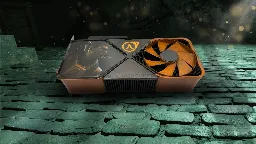A Valve engineer fixed 3D lighting so hard he had to tell all the graphics card manufacturers their math was wrong, and the reaction was: 'I hate you'
A Valve engineer fixed 3D lighting so hard he had to tell all the graphics card manufacturers their math was wrong, and the reaction was: 'I hate you'

www.pcgamer.com
A Valve engineer fixed 3D lighting so hard he had to tell all the graphics card manufacturers their math was wrong, and the reaction was: 'I hate you'


